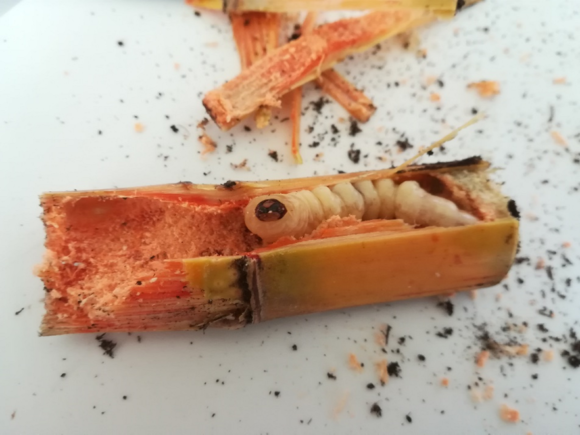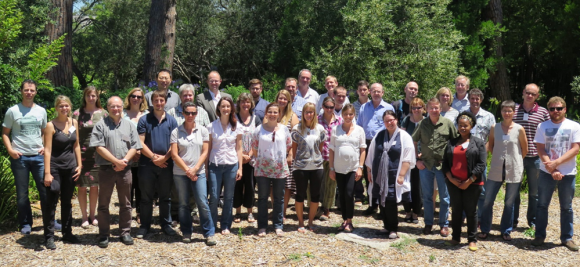31 May 2019 | By Marion Javal
The screening of several biocontrol agents revealed that the larvae of an emerging pest, a sugarcane longhorned beetle, show high resistance to both an entomopathogenic fungus (EPF) and nematodes (EPN). This conclusion is based on experiments aiming at testing the virulence of different locally isolated EPN and EPF species, but also at helping understand the resistance methods of this pest. The research was conducted by C·I·B postdoctoral fellow Dr Marion Javal, C·I·B Core Team Member Prof John Terblanche, and colleagues, all based at Stellenbosch University at the Department of Conservation Ecology and Entomology.
The sugarcane longhorned beetle (Cacosceles newmannii) is a cerambycid native to Mozambique, eSwatini and South Africa. The biology of this beetle is poorly known, and its host plants have not yet been fully determined. Larvae of this beetle were found in 2015 feeding on commercially grown sugarcane in the KwaZulu-Natal province of South Africa. They dig galleries into the sugarcane stool and upwards into the stalks, but are mainly found in the underground stalks. The reasons underlying the shift of this longhorned beetle from its primary host plants to sugarcane remain unclear. However, this species has the potential to spread and cause considerable agricultural and economic losses.
This study was the first to assess the effectiveness of several EPNs and one EPF as biocontrol agents against of the longhorned beetle. Overall, larvae of the sugarcane longhorned beetle appeared to be resistant to the biocontrol agents. Only one of the EPNs species, Steinernema jeffreyense, caused larval infection, at very low levels. One reason for this is that the symbiotic bacteria associated with the nematodes, which cause death of the beetle larvae by septicaemia, failed to develop in the larvae’s body, leading to a very slow development of the nematodes.
Integrated pest management (IPM) is an approach that aims at reducing pest populations, while limiting pesticide use and therefore increasing environmental and human health.
“IPM often implies the use of complementary methods that can work synergistically” says Marion Javal. She adds, “The biocontrol agents we used in this study showed limited success in increasing larval mortality, but their pathogenicity needs to be investigated when coupled with other biopesticides or natural enemies”.

Read the paper
Javal, M., Terblanche, J.S., Conlong, D.E., Malan, A.P. 2019 First screening of entomopathogenic nematodes and fungus as biocontrol agents against an emerging pest of sugarcane, Cacosceles newmannii (Coleoptera: Cerambycidae). Insects 2019, 10, 117; doi:10.3390/insects10040117
For more information, contact Marion at marion.javal@gmail.com


